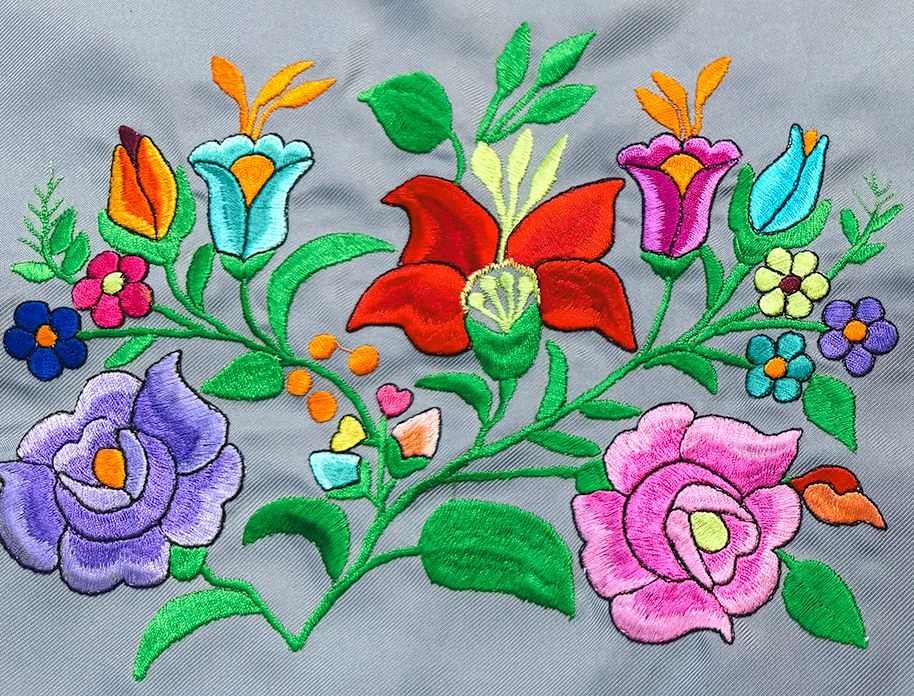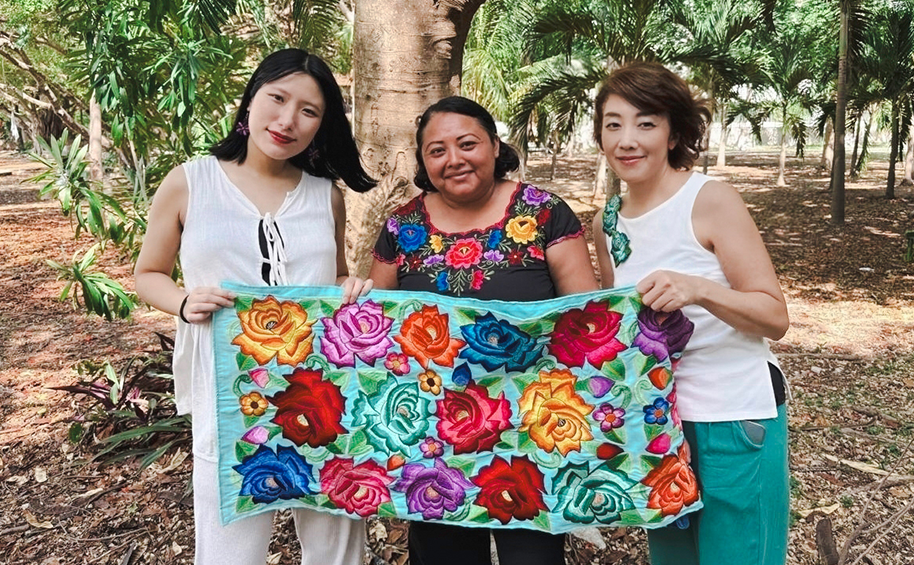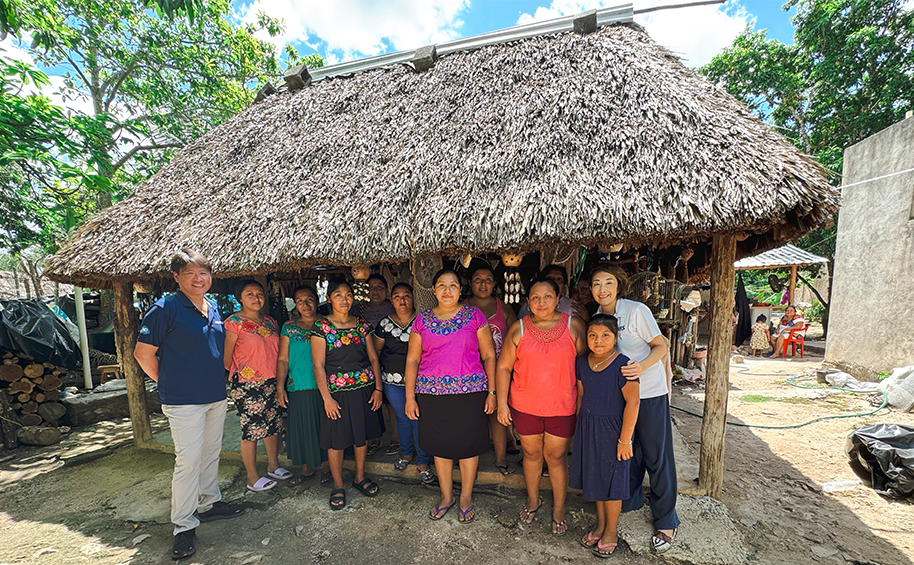
The "Mayan Traditional Embroidery Project": Passing the torch of women's financial independence and Mayan tradition to future generations by ensuring and supporting the inheritance and sales channels of embroidery
Due to the loss of tourism income caused by Covid-19, the lives of the Mayan people became very difficult. In June 2020, the "Mayan Traditional Embroidery Project" was launched with the aim of preserving the Mayan traditional embroidery that they've carefully passed down and supporting women's financial independence. We spoke with Ms. Aihara of HIS Mexico about the project, which has been diligently carried out to foster coexistence with the local community, aiming to establish it as a sustainable system rather than temporary support.
Please tell us about how and where the Maya people live their lives and how the "Mayan Traditional Embroidery Project" came to be.
The Yucatan Peninsula of Mexico, where ancient Mayan ruins remain, is dotted with numerous villages of the Mayan people, who are mainly relatives. Although there are paved roads running through them, the villages are located in the jungle far from towns, so a car is necessary to get around. In order to earn an income, men often go to town to work, while women are generally responsible for childcare and housework and earn a living by embroidering and other domestic work in their spare time. Some people also live a self-sufficient lifestyle by growing vegetables and farming animals. Women have few opportunities to learn due to the custom of marrying young, and many of them cannot read or write even if they can speak Mayan, which of course is necessary for daily life, and they rarely go outside the village.
In the midst of this situation, the Covid-19 pandemic broke out. Men who had been migrating to tourist areas and selling souvenirs lost their jobs, and embroideries for tourists could no longer be sold, making their lives financially difficult. At the time, our HIS Mexico branch was also looking for new ventures other than travel business, as we were no longer receiving customers from Japan, and I remembered that a friend of mine who works for a NPO(Non-profit Organization) supports women in Mayan villages. As a travel agency that's graced with the ruins and nature protected by the Mayan people, we decided to support this project to give back to the people of this place. The "Mayan Traditional Embroidery Project" is a collaborative project with the local NPO "Asociacion Pro-Dignificacion de la Mujer Maya. A.C."(Association for the Dignity of Maya Women). The embroideries, which are handcrafted piece by piece in-house by village women, are characterized by a spectrum of colors and the unique senses of the Mayan people who live in harmony with nature, and are sold at souvenir stores and street vendors. However, in recent years, embroideries have begun being mass-produced in factories, leading to a tough situation, making it hard to overcome price competition. This project aims to establish a sales channel for the Mayan traditional culture, that is embroidery, through e-commerce sites and other means, and to pass on embroidery techniques to future generations, thereby helping them to become economically independent.

This is a Mayan traditional embroidery with a beautiful color combination
The village we are supporting is about 2.5 hours from Cancun, near the Coba ruins. In June 2020, we visited the village for the first time and spoke directly with local residents. As we listened to their lives, the challenges they faced, and their hopes for the future, the needs and directions of our support became clearer.
Many of the Mayan women are taught embroidery by their mothers since they were young, but only a few of them actually make use of embroidery as a source of income. So, we began by gathering the women together, providing them with materials, and holding embroidery classes. We called for support from the U.S. and Japan and used the funds to purchase fabric, thread, scissors, and other necessary materials. The lessons were held over several sessions, and eventually the students acquired a level of skill that would allow them to produce marketable finished products. Additionally, in order to establish a method for continuous sales of products, an e-commerce site called "MAYA MEXICO" was launched to provide an environment for online purchases. By adopting the C2M (Consumer to Manufacture) model, in which products are manufactured only in response to orders received, we aimed to create a sustainable method while avoiding overproduction. Furthermore, we have established a system whereby customers participating in HIS Mexico tours are given embroidered goods crafted by Mayan women as a special gift, and a portion of the tour sales go back to the "Mayan Traditional Embroidery Project". This has enabled the project to achieve a certain level of demand and a balance with production, thereby attaining continuous and sustainable support. This initiative, which combines tourism and community support, contributes to improving the lives of Mayan women while at the same time passing on traditional culture.

Did you notice any changes or gains as a result of the project?
Since this village has not been commercialized as a tourist destination, it was quite rare for Japanese people to visit, and at first, the villagers seemed to wonder who they are. However, after several years of continued visits, we've begun to gain recognition, and I feel that the villagers are now pleased to have developed a sense of connection with the country of Japan. In addition, we had the chance to interact with a few Japanese companies and embroidery associations that have learned about this initiative, and were also provided with embroidery materials, sewing machines, and instruction books, which I believe has contributed to the overall improvement of traditional embroidery techniques. The circumstances these women are in have been shaped by long-standing culture and ways of life, so it is not something we can easily change. However, we hope to make efforts to provide an environment where women, and especially children, are not confined to the small village community, and are able to step forward into a new realm of future possibilities.

With Support members
If you have any memorable exciting episodes, please share them with us.
During the Covid-19 pandemic, our Mexican subsidiary conducted an online "Maya Village Live Walking Tour" for people in Japan to introduce them to the Maya village. The children of the village took the lead in helping us. They guided us around the village, taught us about their daily lives such as what they eat, and I was truly grateful for their support. By building a mutually supportive relationship, I felt that our bonds grew even stronger.
What are things you strive for in the project?
The long distance between Cancun and the village where we live makes frequent visits difficult, but even if we are not able to visit the village, we make sure to send new design ideas regularly and keep in touch with the women to keep their spirits up. We hope to build a relationship where both parties can feel that "we are always with the people of the village," even though we may not directly express this in words.

What are your goals and ambitions for the future?
We would like to extend our support not only to this village, but also to people in other villages who are in similar situation. Ultimately, our goal is to empower the village to continue these projects on their own, without our involvement.
We were recently able to hand three sewing machines to the village, and we're now considering what kind of instruction would be most effective for the girls as we aim to help them acquire sewing skills outside embroidery that hopefully would lead to better education. We also donated seven computers to a junior high school in the village, in the hope that by learning and researching, the children will expand their knowledge and have more options for the future. I believe that the shape of happiness differs depending on where you were born and raised. And more than anything, we wish for the children to dream big and create their own unique future without giving it up. With that in mind, we're committed to continuing our efforts, one step at a time.
-

-
Aihara Tomoko
H.I.S. GIRAS INTERNACIONALES MEXICO S.A. de C.V.
(HIS Mexico branch)Joined the company in 2017. During the Covid-19 pandemic, as a founding member of the New Business Department, she established and operated a photo studio and supported activities for Mayan women. While currently balancing the Inbound Business Department and the New Business Department, she continues to promote the appeal of Mexico both domestically and internationally.
*Please note that the content of this article was current at the time of the interview.
